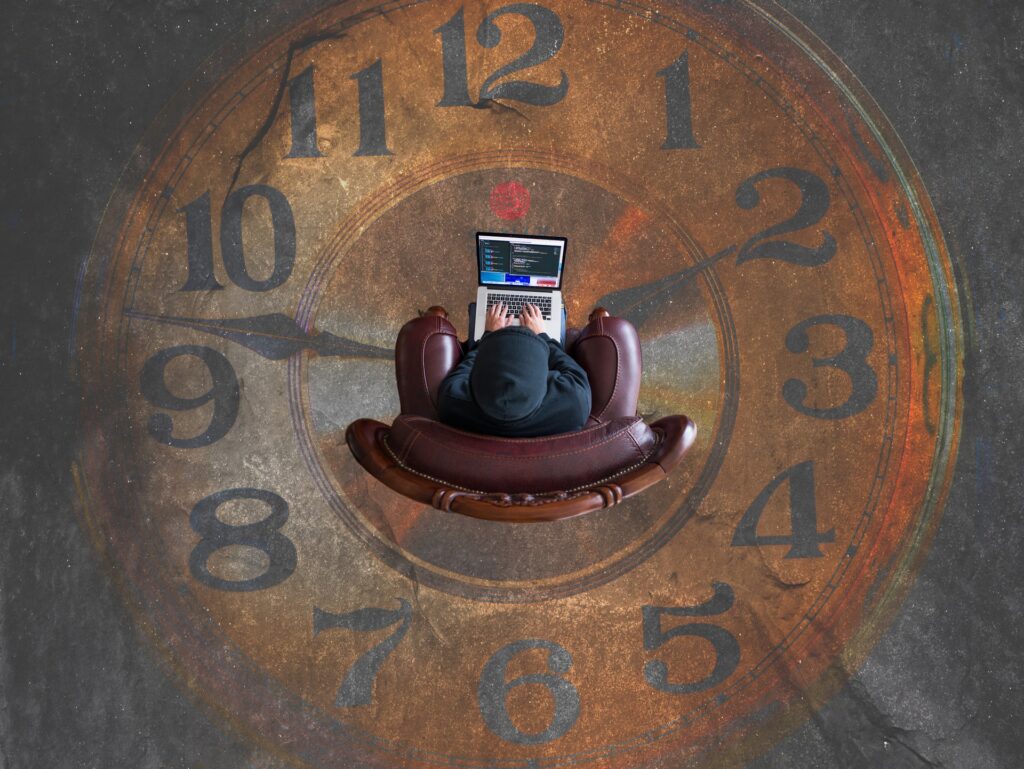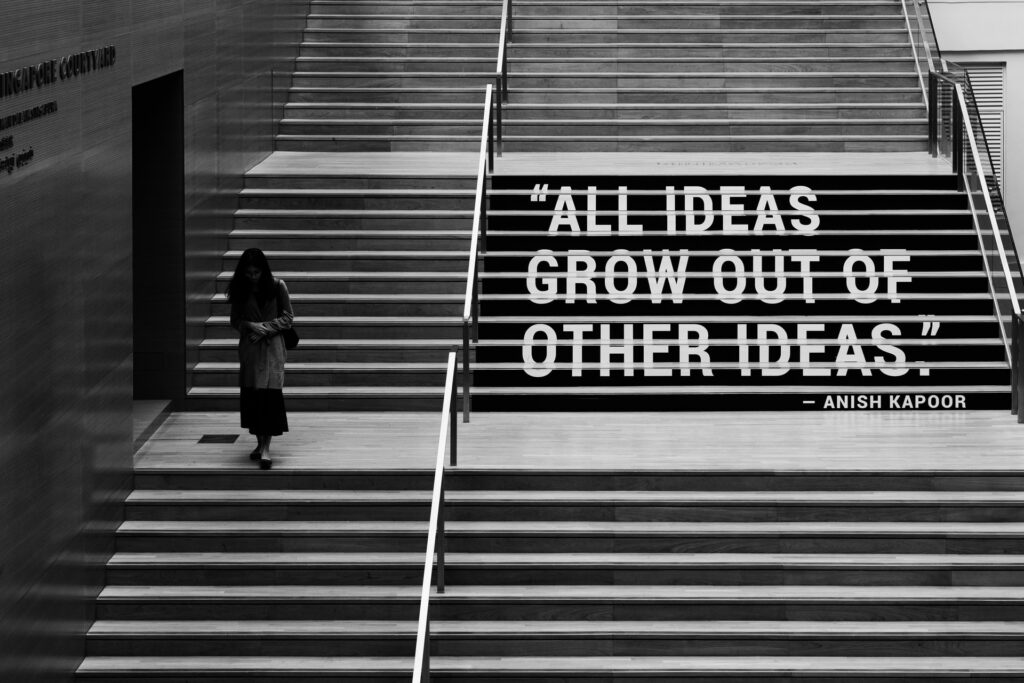When it comes to difficult projects, procrastination is not the enemy to fight.
It communicates to you must-needed information.
Just as fear reveals a lack of preparation, procrastination can reveal a lack of capability.
You need this information to start elaborating strategies that will benefit you.
In itself, procrastination is not a problem.
The problem is the way we do it and for how long.
Other than that, procrastinating is as normal as breathing.
Every human who has ever lived has procrastinated.
Why is it then negatively portrayed?
Procrastination refers to both feeling and behavior.
Misinterpreting the initial feeling leads to wrong behaviors.
It’s from this point that self-judgment begins.
With it, a whole bunch of undesirable emotions kicks in.
As we don’t want to feel guilt or self-hatred, we indulge in more procrastination.
Then we’re trapped in this state for longer than necessary.
We voluntarily delay actions that are in our best interest.
Depending on the reason for procrastination, you might want to work on the feeling or the behavior first.
When done correctly, procrastination becomes an ally.
It allows us to understand ourselves and think things through.
When Procrastination Is Done Poorly
All types of procrastination can fit into two categories: tasks with or without a deadline.
I find the second one more harmful than the first.
When there is a deadline, your emergency alerting system will activate at some point.
You’ll find the energy to do the task—most likely poorly—in a short time and at the cost of tremendous stress.
Tim Urban’s hilarious Ted Talk illustrates well this category.
In our minds coexist three players:
1-The rational decision-maker: it makes long-term plans that make sense.
2-Instant gratification monkey: it ignores the rational decision-maker and sails towards the easy and fun.
3-The panic monster: it wakes up at the approach of the deadline, scares the monkey to death, and takes the control of the boat to save what can be saved.
This situation happens when there’s no teamwork inside our minds.
The person doing the planning doesn’t take into consideration the difficulties of the doer.
They split ways with the result we know.
The other type of procrastination concerns the tasks without deadlines.
Or to be more precise, the only deadline is death.
Among those tasks are: Realizing our potential, achieving our dreams, improving ourselves and our relationship with God, exercising, and much more.
We put them in a special box called “Tomorrow will be different”.
Since tomorrow is as crazy as today, these tasks stay in the box.
Hence, this type of procrastination is more damaging as there is no panic monster waking up.
Life passes by while we keep generating more unhappiness and regrets.
Why Am I Procrastinating?

This should be our first question.
We always have a good reason for procrastinating.
There’s nothing negative about it.
Among the reasons for procrastinating are:
- Not enjoying the task.
- Fear of failure
- Boredom due to unexciting projects
- Lack of capacity for accomplishing the task
- Working on the best thing you could be working on.
The last point is where we want to be —working on the more important first and leaving the rest for a more appropriate time.
As Goethe said:
“Things which matter most must never be at the mercy of things that matter least.”
Asking “Why I am procrastinating?” allows us to focus on the cause rather than the symptom—how I procrastinate.
Whether we are a couch potato or stay busy with the little stuff, the result is the same.
The most important is left undone.
Knowing why reframes procrastination.
To realize the power of reframing, compare these two: unemployment vs a year off.
Which one sounds better?
Similarly, “I’m a useless couch potato” is different from “I’m thinking about the next step to take”.
One is a negative self-judgment (demotivating), and the other is an opportunity to improve (motivating).
The next step will vary depending on our reasons for procrastinating.
Where Your Time Goes?
The Prophet (pbuh) said:
“There are two blessings which many people waste: health and free time.” [Bukhari]
Projects that will benefit you personally, professionally, and spiritually require a big chunk of time.
Wasting time makes our life unnecessarily hard.
So to help achieve our goals, we need to have data on where our time goes.
I recommend downloading two apps on both your computer and phone.
And for one week or two, track your time.
Pay particular attention to the activities that take a big chunk of time (an hour or more) and how you use your days off.
It’s free and requires you to do the input.
You can create any category that it’s relevant to you.
For me, the categories were:
Sleeping, blog, Islam, workout, reading, cooking, side projects, and relax time.
Once you have a good picture of where your time goes, you can allocate it more efficiently.
Also, you can plan more accurately as you have a clear idea of what is possible to do.
It’s a paid option but you have two weeks free trial.
Two weeks are enough to know which websites or apps are taking a big chunk of your time.
Start Optimizing Your Time

In The Effective Executive, Peter Drucker wrote:
“I have not come across a single ‘natural’: an executive who was born effective. All the effective ones have had to learn to be effective. And all of them then had to practice effectiveness until it became a habit.”
When we know that being effective requires work, we stop judging ourselves.
Procrastination is not some personality defect.
So far, we haven’t started any work yet.
All we did is tracking our time.
Now that we have an idea of where we could potentially fit the future task, we can start clearing up the way.
The more complex is a task, the larger the block of time required.
So we want to eliminate the nonessential tasks.
This is the fastest way to optimize.
As we have this free time waiting to be used, we’ll need to give a clear directive to our brain so it cooperates with us.
An oft-cited study done by Dr. Gail Matthews shows that we are 42 percent more likely to achieve our goals if we write them down.
This is not surprising.
An archer without aim has a very low probability of hitting the target!
Also, our goals need to be challenging and meaningful.
If it’s too easy, it won’t fire us up. If it’s too hard, we’ll snap.
We need an in-between difficulty level so that we catch excitement without falling into paralysis.
Preparing For the Obstacles

At this point, we’re still procrastinating on our tasks or project.
And this is what procrastination is for.
It gives time to think things through.
Before starting the task, we want to know which obstacles will be facing.
This is the opposite of positive thinking—wishing hard for the outcome to happen.
We want to have the desired outcome in mind, but we won’t stop there.
We also want to acknowledge the challenges and prepare for the obstacles.
This way, we save time and mental energy by pre-deciding what to do.
Once we start the task, we’ll be on auto-pilot mode.
What do I tend to do when I procrastinate?
This question will give you a list of your negative triggers.
Pre-decide what to do when they occur.
For example: If I need to do this project, then I need to put my phone away.
Another obstacle could be the deadline.
The further away a project is due, the less we want to work on it.
In this case, chunking is useful.
Have intermediate goals to get you started and keep you going.
Let working on your project be the highlight of your day.
I do my most important task early in the morning before starting my job at 9 am.
Pick a block of time where serious work is possible and stick to it.
Emotional Regulation

In The Now Habit, the authors define procrastination as the following:
“A mechanism for coping with the anxiety associated with starting or completing any task or decision.”
Up to now, all we did is prepare the ground.
We reframed procrastination, picked a block of time, specified the outcome, and prepared for future obstacles.
All this work allows us to deal with certain emotions before they arise.
But it might not be enough.
We’ll still need to develop some emotional-regulation skills.
Keep in mind that it’s easier to change your emotions by taking action than it is to change your actions by trying to feel differently.
Feelings follow behaviors even more than behaviors follow feelings.
If you don’t feel like doing something, just get started.
A tiny action like switching on your laptop can do trick.
Your motivation will follow and any stress or anxiety will fade away.
If the project is in your growth zone, feelings like fear of failure or overwhelm are normal to have.
Welcome them as temporary guests.
With your preparation and focus on action, they’ll go away.
The risk of failing will still be there, but you can pride yourself on taking it.
Building Confidence

The early stage of any growth experience is uncomfortable.
There’s no way around it.
If you recall a past personal growth experience, you’ll find you went through four growth stages.
This is what Dan Sullivan calls the 4 C’s: Commitment, Courage, Capability, and Confidence.
If your project is challenging, you’ll have to go through the same stages.
Anxiety will tell you the new capability you’ll need to build.
Fear will remind you that you are not ready for the task.
These two will fuel your commitment.
The more you commit, the shorter the period of courage will be.
Courage is fear while doing what you’re supposed to do.
It doesn’t feel as good as confidence. So you want to keep it short by your commitment.
It’s the commitment to the process that will determine your progress.
As your brain is in a state of alert during these two phases, it will help you develop the new capability.
With this new capability, you’ll confidently finish your challenging project.
The newly gained confidence will make you commit to more challenging projects.
It’s a process that repeats itself.
Once you understand this process, you’ll become more comfortable with it.
People who don’t will keep waiting for confidence that will never come.
Tying All Together
Imagine you are standing on a map.
Once you set a goal, you’ll have a starting point and a destination.
These two points form your path.
Emotions are the feedback you receive while walking the path.
While positive emotions keep us moving, the negative ones signal an obstacle on the path.
Even if the path is straight, your growth won’t follow a linear line.
You’ll go backward, forward, or in a zig-zag.
You’ll be crawling, walking, or running.
But ultimately, the system you put in place will help you get to your destination.
This whole process can be illustrated by the dominos effect.
One small action can bring down a bigger difficulty.
Keep in mind that this process requires energy.
Without it, none of what has been said would work.
Many people procrastinate because they are tired.
If your tank is empty, you can’t expect that much of yourself.
Have enough sleep, eat clean, and exercise.
Final Thoughts
The knowledge you gather from outside sources is as important as your own.
Try and get your ideas out of the head so they leave place for new ones.
You can use the scientific method and adjust as you walk the path:
1. Observe what’s going on and keep what’s working.
2. Guess why something is not working and formulate a hypothesis.
3. Experiment to test your hypothesis.
4. Measure the results and decide whether you were right or not.
The Roman Emperor Marcus Aurelius once wrote:
“You could be good today. But instead, you choose tomorrow.”
I would say: Start tomorrow if it helps you prepare but do start.
Between the pain of starting and the pain of regret, the choice is easy.
Article published: May 16, 2022
Popular Articles
- 7 Lessons from Luqman that Will Make You Wise
- How to Enjoy Salat and Make it Meaningful
- Mongols Invasions: Some Forgotten Lessons to Today’s Muslims
- For or Against Vaccines? That’s Not Really the Question
- Are Muslims Meant to Be Sleep Deprived?
- Islamic Psychology: A Model Where Faith Has Its Place
- Muslims Judging Each Other: Why and How to Be Less Judgy
- The Value of Time
- 3 Tips to Unlock the Believer Mindset
- The Certainties of Muslims in an Uncertain World
- Allah According to Allah: The Beauty Behind the Verse of Light
- How to Make People Change their Mind: Persuasion!
- 5 Powerful Duas from the Quran to Help You in Both Worlds


